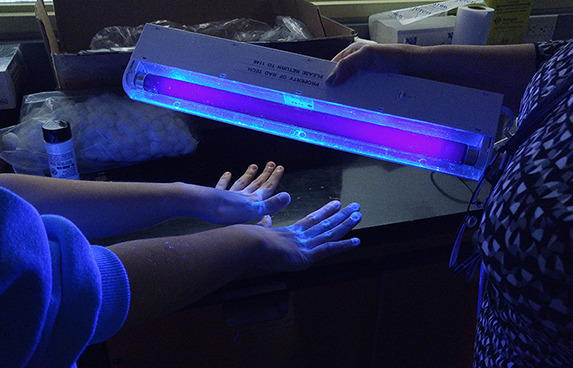December is here, and that means it is officially flu season for the next four months. While health care workers across the province have been encouraged to get the flu shot, one of the best ways to stop the spread of flu and other germs remains effective hand washing.
The hands of health care workers are the most common vehicle for the spread of microorganisms from one patient to another, and between patients, equipment and the surrounding environment. Health care workers’ hands are constantly touching surfaces, objects, patients’ skin, mucous membranes, waste, body fluids and their own body. The Public Health Agency of Canada says adherence to hand washing recommendations is the single most important practice for preventing the transmission of microorganisms in health care, and directly contributes to patient safety.
When Public Health Ontario launched the Just Clean Your Hands program in 2008, it found that proper hand washing techniques were being used by as few as 40% of health care workers.
What is effective hand hygiene?
Michener health nurse Gloria Szollosi says that to adhere to good hand hygiene, use 70% to 90% alcohol-based hand sanitizers for cleaning hands that are not visibly dirty, and wash with soap and running water when they are.
 To illustrate the importance of good hand hygiene, Gloria used germ simulation powder to show students how easily germs can be left behind during routine hand washing. Second year chiropody students who participated in the exercise rubbed the powder on their hands, washed their hands and used a black light to see the results. Even after washing their hands, students found residue in trouble areas such as the palms, between the fingers and under the fingernails.
To illustrate the importance of good hand hygiene, Gloria used germ simulation powder to show students how easily germs can be left behind during routine hand washing. Second year chiropody students who participated in the exercise rubbed the powder on their hands, washed their hands and used a black light to see the results. Even after washing their hands, students found residue in trouble areas such as the palms, between the fingers and under the fingernails.
Technique, Gloria says, is crucial to proper hand washing. Fifteen seconds – about as long as it takes to sing “Happy Birthday” twice – is the amount of time needed for proper hand washing, paying special attention to the finger tips, between fingers, the back of the hands and the base of the thumbs.
Being conscious of the four moments for hand hygiene, as described by Public Health Ontario, is also critical to stop the spread of germs.
Four Moments for Hand Hygiene:
-
Before initial patient or patient environment contact
Hands should be cleaned before touching a patient, before touching any object or furniture in the patient environment and before putting on gloves.
-
Before aseptic or clean procedure
Hand washing before these procedures helps to protect the patient against harmful germs, including their own germs, entering their body.
-
After body fluid exposure risk
Hand washing immediately after exposure to body fluids, and after glove removal, protects the health care worker and the environment from harmful patient germs.
-
After patient or patient environment contact
Health care workers should clean their hands when leaving a room, after touching a patient and after touching any object or furniture in the patient’s environment.


